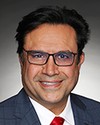Thank you, Mr. Chair, and welcome to our witnesses.
Thank you for your testimony, and I can see how proud you are of the work that your members have done on making sure that, as you called it, a piece of marble has been developed, and I can see that pride in your faces. Please convey that to your members as well, and thank you for making this project happen, given all the challenges.
Over the last number of meetings, we've kind of established, at least from my point of view, that there was a business case from a benefit, whether it was downstream of the economy.... I was very happy to hear that the margin now is $10. I recall that, at $9, it was $258 billion, and if you divide that by the number of households and the benefit that's coming in.... I'm not going to go there, but there is a lot of benefit.
My line of questions is going to focus on the key drivers.
We've talked about how numbers have increased. We can talk about whether the original number was properly done, properly estimated or not, but what were the key drivers and what were some of the key challenges? I think Mr. Campbell pointed to at least five of those challenges. What was the impact on the timeline and cost?
I believe that Mr. Maki said that $9 billion accounts for a third of these overruns. That's not under our control, but now that all the numbers are out, if this thing was estimated at, let's say, $12 billion, and now it's $34 billion, we are accounting for about $22 billion in overrun. What were the key drivers, and how do you break down those overruns by each one of those?
Who wants to start? Who feels more comfortable? Go ahead. You have three minutes.

